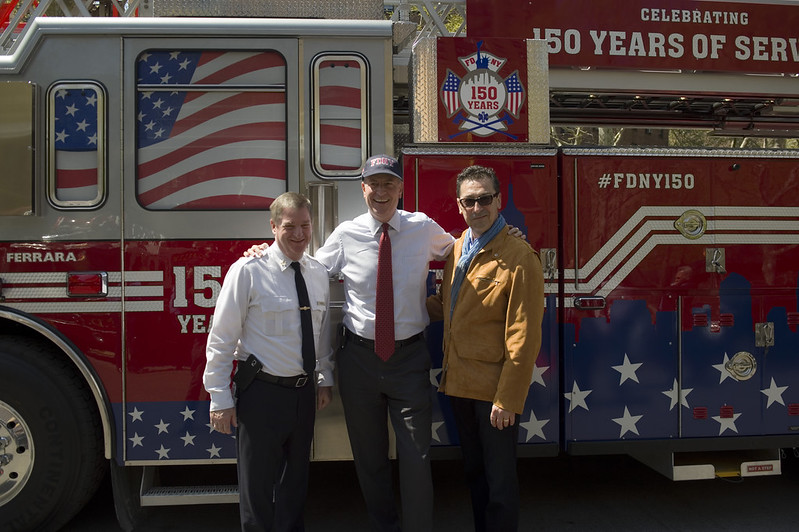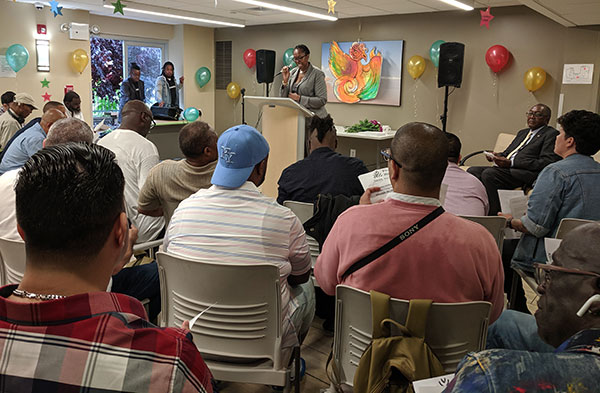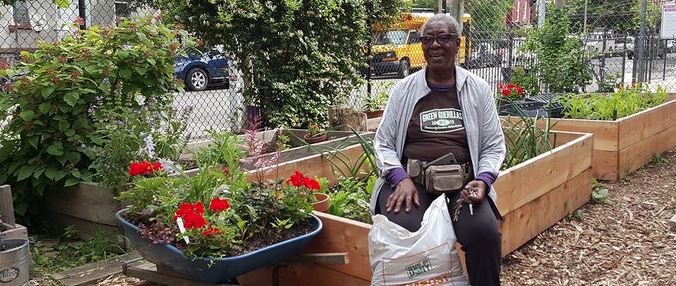Racing to the Scene of the Wrong Emergency

(photo: Demetrius Freeman/Mayoral Photography Office)
The New York Times recently published a two-column editorial advocating that the city’s emergency medical technicians (EMTs) and paramedics be paid close to or as much as its firefighters. Far easier for the Times to virtue-posture by supporting more pay for hard-working, largely of color EMTs than to address how the increased expense should be funded or how to remedy the astonishing imbalance in resources devoted to firefighting versus to emergency medical response.
The editorial speaks movingly about the importance and stresses of emergency medical service work, but simply notes blithely two remarkable problems. First, the salary increases would mean dramatically raising base pay after five years on the job, from about $50,000 for EMTs and $65,000 for paramedics to the $85,000 base pay of firefighters, at a cost of half-a-billion dollars a year. Second, the reason the job of EMTs and paramedics has become so important and challenging is that the vast majority of emergency calls in New York City are now not about fires, but medical needs.
More than 80% of emergency incident calls to 911 in New York City – almost 1.5 million out of a total of 1.9 million calls a year – are medical, not fire-related. Yet there are only 4,300 EMTs and paramedics employed by the FDNY. In contrast, there are 11,000 firefighters to respond to 40,000 fires a year, only about 2,000 of which are deemed serious structural fires. A relatively small percentage of medical emergency calls are handled by private ambulances, but the contrast between medical and fire calls handled by FDNY is still dramatic.
Medical emergencies have far outnumbered fires since the Emergency Medical Service merged into the FDNY in 1996. New and renovated buildings are now generally well-fireproofed due to strong building codes and improved technology has cut down on the number of false alarms. Meanwhile the aging and growth of the city’s population, the drug addiction crisis, and other factors have led to a dramatic rise in the need for emergency medical response.
The number of medical incidents to which the FDNY responds is 25 times that of fire-related incidents and more than 38 times that of structural fires, yet more than 70% of the FDNY budget and two-thirds of its personnel are devoted to staffing fire units.
Firefighters assigned to engine (as opposed to ladder) companies must receive training as Certified First Responders with Defibrillation (CFR-D) and these companies are dispatched to respond to some medical emergencies. They can often arrive more quickly than an ambulance staffed by EMTs and/or paramedics, but CFR-D firefighters are not able to transport patients to a hospital, or administer intravenous or medication or other types of medical intervention, so in most cases (70% require transport), an ambulance must also respond and take over. The deployment of engine companies, each staffed by four or five firefighters and an officer, thus gives the firefighters more “runs” but they are mostly redundant and extremely expensive.
There is a great deal of emphasis in public discussion of emergency medical services on response time, i.e. how long it takes for a fire truck or ambulance to arrive on the scene of a call. While the average response time for both ambulances and fire engines has risen a few seconds over recent years, the vast majority of calls are for situations that are not life-threatening and for which response time is not a critical issue.
Deployment of more staff and ambulances that can respond more promptly to the most serious incidents would be more efficient and effective. The increased costs could be offset by reducing the number of fire engines and ladders, which are no longer necessary given the reduced level of firefighting—but an effort to right size firefighting resources is regarded as politically untenable because no one ever wants to lose a firehouse nearby, regardless of how busy it is.
Another approach, adopted successfully in Houston, would be to require firefighters to receive EMS and/or paramedical training so that fire engines can provide the full range of services needed for medical calls, including transport.
But again, the obstacles are primarily political – firefighters would resist the additional training requirements and the unions representing EMTs and paramedics would howl at further erosion in their numbers (many already leave to take advantage of the priority they are given to become firefighters).
Although FDNY recognizes the need to reconfigure the department, it has not made significant efforts to do so. In 2016 it instituted a pilot program in the Bronx of using “fly cars,” SUVs staffed by EMT supervisors and paramedics, to respond to life-threatening incidents along with an ambulance and instead of fire engines. It reduced response times by more than one minute. It has been announced that this program will be expanded in October but no details have been provided.
Instead of talking about the difficult but necessary steps to provide more and better ambulance service to New York City residents, the Times and elected officials – many of whom just rallied with EMTs on the steps of City Hall – are choosing the easy message that makes no one unhappy but solves very little: pay more to the stressed and stretched EMTs and paramedics but ignore the serious underlying structural problems that will continue to plague the city’s emergency response system in the absence of an honest discussion and real leadership.
***
Carol Kellermann was president of Citizens Budget Commission from 2008 through 2018.
***
Have an op-ed idea or submission for Gotham Gazette? Email This email address is being protected from spambots. You need JavaScript enabled to view it.
Recognizing and Responding to Addiction: What to Know for National Recovery Month and Beyond

Ann-Marie K. Foster, the author, addresses program participants (photo: Phoenix Houses)
It’s often said, but worth repeating during National Recovery Month: addiction does not discriminate. Drugs can hook anyone, anytime, anywhere—and it’s more of a problem now than it’s ever been. In New York, for instance, there were more opioid-related overdose deaths in 2017 than there were in the first six years of the 2000s combined.
Today, the types of drugs available are also terrifyingly effective at creating addicts. Fentanyl and other synthetic drugs are perhaps the worst among them. They are 50-times stronger than heroin and 100-times stronger than morphine. They are also cheap and fairly easy to find in New York. And, they flooded in so fast that we are only now fully realizing the seriousness of this public health issue.
There are some obvious actions government can take to turn this crisis around. Continuing to fund state treatment programs and ensuring life-saving medicines are available statewide should be essential parts of any plan. Reducing access to dangerous illegal drugs and engaging in serious education campaigns to prevent use in the first place is also necessary.
But even all of that will never fully free us from the eternal epidemic of addiction. Addiction is wickedly persistent. It has followed us through the centuries and always finds a way to come back in one form or another. But recovery is possible.
National Recovery Month is an effort to increase awareness and understanding of substance use disorders. Everyone should be armed with the knowledge necessary to identify the warning signs of addiction in a loved one because anyone could be an addict. And it could save their life.
The main signs of addiction are: change in baseline behavior from normal; spending more time alone; irritability; mood swings; change in sleeping habits; change in diet and weight gain or loss; eyes dilated or pin-pointed.
As the largest provider of addiction treatment services in New York, we also see other common trends amongst our patients. The majority of the patients we treat have experienced trauma or have other co-existing health or mental conditions. Many are also dealing with deep guilt, regret, and self-loathing about their behavior and the consequences of their actions, which can manifest itself in various, often destructive, ways.
We believe in treating the whole person to promote the message that recovery in all forms is possible. So we provide medical and dental care, wellness programs, community support, and even recreational activities as part of our continuum of care in addition to evidence-based treatment.
But, ultimately, overcoming addiction is often about the people around the patient. That is why it is so essential that New Yorkers of all backgrounds have the knowledge to identify addiction, the strength to talk to their loved one about it, and the compassion to support them through recovery.
In this time of crisis, don’t be afraid to talk to a loved one about their possible addiction. And don’t be afraid to ask for help. Addiction is a scary place to be, but there are always paths out. With care and the right tools, addiction doesn’t have to win. First though we have to have the will to fight it.
***
Ann-Marie K. Foster is the CEO & President of Phoenix Houses of New York & Long Island. On Twitter @PhoenixHousesNY.
***
Have an op-ed idea or submission for Gotham Gazette? Email This email address is being protected from spambots. You need JavaScript enabled to view it.
Soil Scientists’ Advice to Urban Gardeners: Test for Lead

(photo: @NYCzerowaste)
In the past few years, the issue of soil contamination has gained the attention of environmental groups in New York City. New Yorkers have ample reason to be concerned about their soil. While the city is cleaner than it used to be, decades of pollution left our local soil thick with toxic levels of heavy metals. For years, the presence and persistence of these toxicants were unknown, posing risks to all urban residents.
Fortunately, public support for environmental protection has rehabilitated much of our city soil. But, there is still more that New Yorkers can do, and Climate Change Week NYC is a good time for us to consider how activities like urban gardening and farming can be done in a way that is both healthy for humans and helps to improve the environment and potentially mitigate climate change.
Abating contaminated soil with organic matter helps reduce greenhouse gas emissions because compost sequesters carbon, diverting it from the atmosphere.
Soil testing labs, public initiatives, and grassroots efforts have done wonders to educate New Yorkers on soil quality and remediation techniques. Urban gardeners began transforming vacant lots in New York City in the 1970s, and such activities have grown in popularity in the past decade. As of 2019, New York City has the largest urban agricultural system in the country, with over 1,900 community gardens and thousands of home gardens growing food and providing other benefits for city residents.
But New Yorkers should be reminded that our soil is still far from pure, and it may likely contain contaminants, like lead and arsenic that we should detect and remediate to avoid exposing our families to harmful consequences. Like any hobby, urban gardening requires preparation, and we must remember to test our soil, change it when possible, and choose our crops carefully so we can reap the best from what we sow.
Testing your soil is your first line of defense against soil-based contaminants. Soil testing labs, like those at Brooklyn College and NYC Urban Soils Institute offer a variety of affordable tests to assess soil characteristics. Generally, you should take several samples from various locations in your garden, combine them, thoroughly mix, and take one cup of representative soil sample to be submitted to the lab. You can request any number of tests on texture, organic content, pH, nutrients, and so forth, although you’ll usually want to start with lead. These labs usually return results between 2-3 weeks.
Testing for the total concentration of lead will provide a broad sense of the soil’s need for remediation. Bear in mind that the total concentration doesn’t always indicate the soil is poor for gardening. Rather, it’s the bioavailability of lead -- how readily it’s absorbed by our gastric systems -- that determines risk. Nevertheless, understanding the total concentration of lead can inform your soil remediation or amendment strategy.
A Columbia University research team has developed a field testing kit that screens soil for hazardous lead, although it’s not yet on the market.
Once you understand your soil characteristics, you can make choices about removing your soil, adding amendments, or bringing in a new soil cover. Compost is the most common and useful amendment, as it contributes organic material for microorganisms to digest, balances the soil pH, and improves soil structure.
There are many organizations that give away free compost (including the Department of Sanitation, and community composters with the NYC Compost Project). You can also purchase compost, or make your own from common kitchen waste -- with the awareness that uncovered scraps can attract scavengers -- and alternate these ‘wet’ layers with dry forms of compost, such as wheat, sawdust pellets, or leaves.
For community-based organizations with reservations about the quality of local soil, there are other options. A helpful approach is to cover the contaminated soil with a layer of clean soil followed by layers of compost. Separating the old soil from the new with a layer of landscape fabric can prevent mixing and later contamination. The New York City Mayor’s Office of Environmental Remediation developed the Clean Soil Bank that takes clean native subsoil from construction sites and makes it available to local organizations or businesses that request it. The soil is available for free for sites that can receive a load of at least 20 cubic yards. There is a new stockpile in East New York Farms! where individuals can also pick up free bags of subsoil mixed with compost.
Lastly, if you’re an urban gardener on a small scale, you can protect yourself by being selective about which crops you plant. For example, we ingest more contaminants stuck to the plant than absorbed into the plant itself. Root vegetables like carrots and radishes can carry traces of lead and arsenic despite repeated washings. Lettuce can trap contaminated soil particles on its surface. However, fruit vegetables, like eggplants, squash, and tomatoes, are usually safe for consumption even from moderately contaminated soil. This is due to the physiological barrier between the soil and the edible crop -- from root to shoot, and from shoot to fruit.
Urban gardening is an excellent hobby that brings city dwellers closer to nature. It’s calming, nourishing, and easy on the budget. But before feeding your family with home-grown produce, be mindful to ensure that your local veggies are being grown in the right soil.
***
By Dr. Anna A. Paltseva, Dr. Zhongqi Cheng, Dr. Maha Deeb, Sara Perl Egendorf, Dr. Peter M. Groffman. (Paltseva and Cheng are with CUNY Brooklyn College, Department of Earth and Environmental Sciences and Graduate Center, CUNY PhD Program in Earth and Environmental Sciences. Egendorf and Groffman also share those two affiliations and are with the Advanced Science Research Center at the Graduate Center, CUNY. Deeb is with the Advanced Science Research Center at the Graduate Center, CUNY, and the University of Lorraine is Nancy, France.)
***
Have an op-ed idea or submission for Gotham Gazette? Email This email address is being protected from spambots. You need JavaScript enabled to view it.




